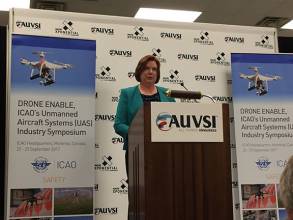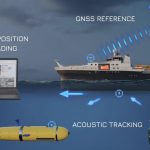The UK Ministry of Defence Equipment and Support office tasked Raytheon to develop a prototype system to exploit assured and resilient position navigation and timing information derived from GNSS, according to a statement. Under the contract, Raytheon UK’s Assured Positioning Navigation and Timing business will deliver a Technology Demonstrator Programme, with advanced multi-element anti-jam technology, to prove the integration of the A-J with a next-generation multi-GNSS receiver to both accelerate and de-risk the availability of such systems to end users.
The Technology Demonstrator Programme will take advantage of Raytheon UK’s extensive A-J heritage and established capability in the development of reduced size weight and power technologies, including Landshield and Landshield Plus, to enable the fitment of GNSS A-J to a wider range of platforms. It will help mitigate the increasing threat of satellite signal interference and provide a future solution that will protect our Front-Line Commands and Critical National Infrastructure.
Landshield houses a multi-element antenna and the anti-jam processing in a single small, affordable, ‘one-box’ solution that interfaces at RF level to the GPS receiver, with minimal system modification required.
[Image: Inside Raytheon UK’s anechoic chamber, one of our engineers aligns a broadband antenna in preparation for a frequency response test of the Landshield Plus unit. The room is designed to both absorb reflections of electromagnetic waves and to prevent outside waves from coming in, allowing a detector to receive the RF energy directly. Courtesy Raytheon.]
The device is intended to replace existing unprotected GPS antennas, as well as enhance original installations where protection against jamming and interference is required. Landshield interfaces with standalone GPS receivers or those integrated within communication, inertial navigation, sighting, vehicle or weapon-aiming systems.
The fully integrated GPS-AJ antennas are suitable for military, critical national infrastructure, maritime, government and avionics where low size, weight and power constraints are key. Landshield is available as Landshield Simultaneous, a 4-element controlled reception pattern antenna (CRPA), and Landshield Plus, a 7-element CRPA.
Both variants work against a full range of hostile jammers – including narrowband, broadband, continuous wave pulse, swept and spectrally matched – and can protect L1 and L2 GPS frequencies simultaneously for enhanced situational awareness, according to the company.
“This programme will help ensure our forces are able to operate effectively within challenging electromagnetic environments,” said Rob Linham, Chief Engineer PNT at the Ministry of Defence.
In March of this year, Raytheon UK announced that it will fund a new projects from Nottingham Scientific Limited. NSL will receive funding to produce a feasibility study on a satellite-based system design to monitor GNSS signals. “This could be used to protect critical infrastructure, assets and vital operations from cyber-attacks like spoofing and jamming,” stated a Raytheon release.






